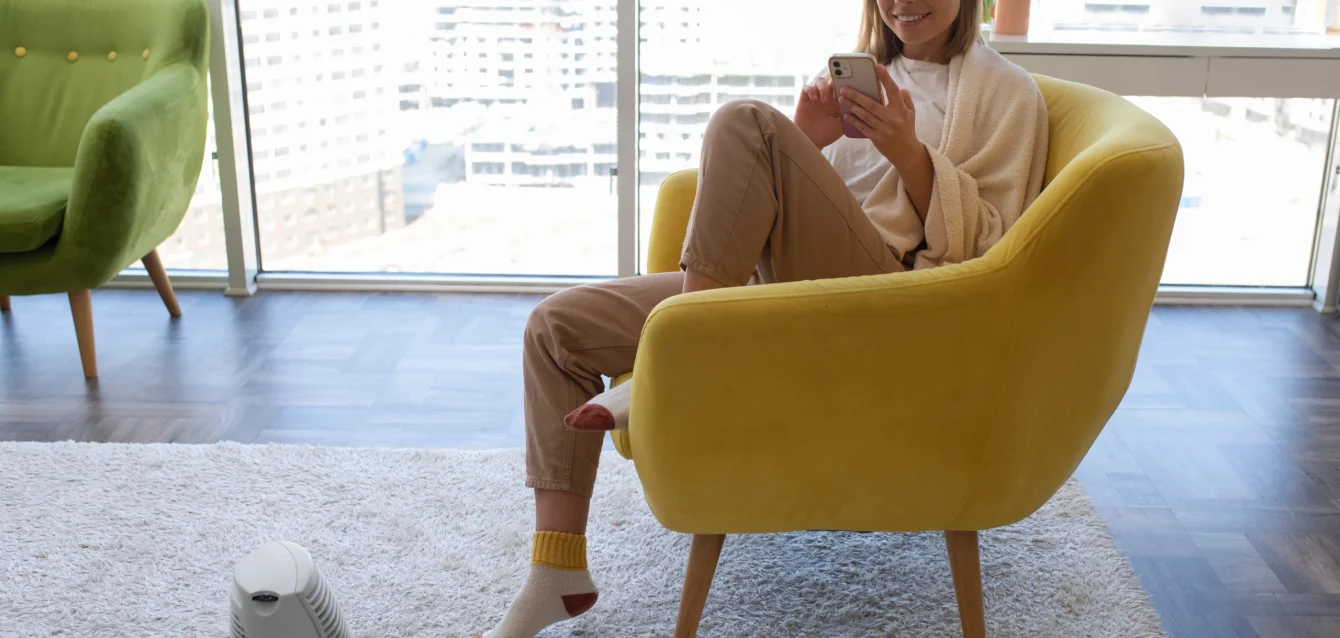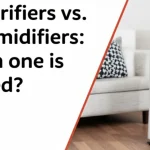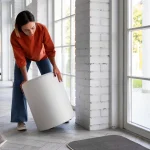
Air quality, whether outdoors or indoors, is poor due to multiple reasons, including vehicle emissions, industrial smoke, construction dust, cooking, cleaning chemicals, cigarette smoke, pet dander, mold, and dust, which are just a few sources. Poor ventilation traps all of it inside, making indoor air often more polluted than outdoor air.
But you know, in this advanced tech era, you can breathe in clean air. There are many types of air purifiers. Each air purifier works differently and solves a different problem. Some remove dust, some remove smells, and others kill bacteria.
Read below to learn how BigWater helps create healthier spaces for parents, allergy sufferers, pet owners, and anyone who wants cleaner air.
Different Types of Air Purifiers
Below are types of air purifiers that help clean the air, make it germ-free, and create odor-free spaces.
HEPA Air Purifiers
HEPA air purifiers are the most trusted and widely used type of air purifier. The term HEPA stands for High Efficiency Particulate Air. These purifiers work by forcing air through a dense filter that captures 99.97% of airborne particles as small as 0.3 microns.
That includes dust, pollen, mold spores, and pet dander, making them especially effective for allergy and asthma relief.
What makes HEPA purifiers stand out is their ability to clean the air without releasing anything back into it. They don’t use chemicals or emit ozone, which makes them safe for babies, seniors, and sensitive individuals.
However, they don’t remove odors or gases unless paired with activated carbon. For clean, allergen-free air, these units are best used in bedrooms, living rooms, nurseries, and classrooms.
Ionic Air Purifiers
Ionic air purifiers clean the air by releasing charged ions into the environment. These ions attach to pollutants like dust and smoke, making them heavy enough to fall or stick to surfaces or built-in plates. Their major strength is quiet operation; they don’t rely on fans or large filters, making them low-maintenance and discreet in small spaces.
However, they may generate trace amounts of ozone, which could be a concern for homes with pets, children, or people with respiratory conditions.
Certified ozone-safe models are a better choice if you’re sensitive. Ionic purifiers are perfect for tackling odors and smoke, but less effective for allergens like pollen or pet dander.
UV Air Purifiers
UV air purifiers use ultraviolet-C (UV-C) light to neutralize airborne bacteria, viruses, and mold spores. Their core function is disinfection rather than filtration. Air passes through a UV chamber, where the light breaks down germs’ DNA, rendering them inactive.
These purifiers are often used in medical settings or homes where controlling pathogens is a priority. While they don’t remove particles like dust or pollen on their own, UV units are frequently combined with HEPA or carbon filters for a more complete system.
Their standout benefit is germ control, making them ideal in clinics, sick rooms, or shared living spaces. They’re not recommended as a solo solution for allergies.
Activated Carbon Air Purifiers
Activated carbon air purifiers specialize in absorbing gases, odors, and harmful chemical vapors (VOCs). The filter is filled with porous carbon that traps molecules from smoke, paint fumes, pet odors, and even cooking smells.
What sets them apart is their strong deodorizing power. They are essential for environments with lingering scents or chemical exposure. However, these purifiers don’t capture fine particles like dust or pollen.
That’s why many high-end air purifiers combine carbon and HEPA filters to cover both particle and gas removal. Activated carbon models are best placed in kitchens, pet zones, new homes with fresh paint or furniture, and anywhere with strong indoor smells.
Smart Air Purifiers
Smart air purifiers are modern, tech-forward devices that adjust automatically based on real-time air quality readings. They use built-in sensors to detect dust, odors, or smoke levels and change fan speeds accordingly.
Connected to apps via Wi-Fi or Bluetooth, they allow users to monitor and control indoor air remotely. Many models also remind you when to replace filters or run diagnostics. Their standout feature is automation.
They reduce manual input and optimize efficiency, which is especially useful for busy households. Some smart purifiers come with built-in HEPA, UV, or carbon filters, offering a full-package solution with smart functionality.
Portable Air Purifiers
Portable air purifiers are compact, lightweight, and designed for flexibility. You can move them from room to room or even take them while traveling.
Despite their small size, many are equipped with strong filtration, HEPA, carbon, or both, making them ideal for single-room purification. Their biggest advantage is convenience.
They don’t require installation and can be used anywhere from a dorm room to a hotel. These purifiers are best for renters, students, or anyone wanting targeted air cleaning without the commitment of a whole-house system.
Whole-House Air Purifiers
Whole-house air purifiers are integrated directly into your HVAC system to clean the air throughout the entire home.
These units are powerful and effective for large families or individuals with severe respiratory issues. Their key benefit is consistent, whole-home coverage.
They filter air before it circulates into rooms, reducing dust, allergens, and microbes on a large scale. Some models include HEPA, carbon, or UV components. While installation requires a professional and comes at a higher cost, the long-term health and maintenance benefits are substantial. These are best for homeowners seeking a permanent air quality solution.
Filterless Air Purifiers
Filterless air purifiers rely on technology like UV-C, ionization, or heat sterilization rather than traditional replaceable filters. Their standout benefit is low maintenance; no filter changes are needed.
They’re suitable for users who want hands-off operation. However, they may not be as effective in trapping physical particles like dust and pet dander unless they use plates or electrostatic attraction.
Efficiency can vary by brand and design. Always check the technology used and whether it produces ozone, especially in homes with sensitive individuals.
Ozone-Free Air Purifiers
Ozone-free air purifiers are designed to avoid generating ozone, a gas that can irritate lungs and worsen asthma symptoms. These purifiers usually rely on HEPA and carbon filters, which clean the air without chemical reactions.
They’re ideal for children’s rooms, pet areas, and homes with respiratory concerns. What sets them apart is their safety profile. Look for models labeled “ozone-free” or “CARB-compliant” to ensure safe operation.
Many modern air purifiers, including innovative models, are now designed with this standard in mind.
Best purifier for different environments
| Environment | Suggested Purifier Type | Reason |
| Dry areas | Humidifier + HEPA purifier | Moisture + allergen removal |
| Humid areas | Dehumidifier + carbon purifier | Mold prevention + odor control |
| City apartments | HEPA + Carbon | Smog, smoke, VOCs |
| Pet-friendly homes | HEPA + Carbon | Dander, odor, and hair control |
| Kid’s room | HEPA (ozone-free) | Gentle, safe, allergen-free air |
| Dorms/offices | Portable HEPA or Smart purifier | Compact, smart control |
Pros and cons of air purifiers
| Pros | Cons |
| Cleaner air and easier breathing | Filter replacement costs |
| Reduces allergy and asthma triggers | Some types may produce ozone |
| Removes dust, pollen, and pet dander | Needs power and space to operate |
| Improves sleep and focus | Effectiveness varies by model/type |
| Controls odors and bacteria | May require multiple units per home |
Conclusion
Different types of air purifiers exist for different needs. Some remove dust, others fight germs, and many do both.
Choosing the right one depends on your space, lifestyle, and health concerns.
An air purifier does more than clean the air; it also supports better sleep, fewer allergies, and more peace of mind.Reach out to BigWater to make choosing an air purifier easy —cleaner air is just a filter away!





